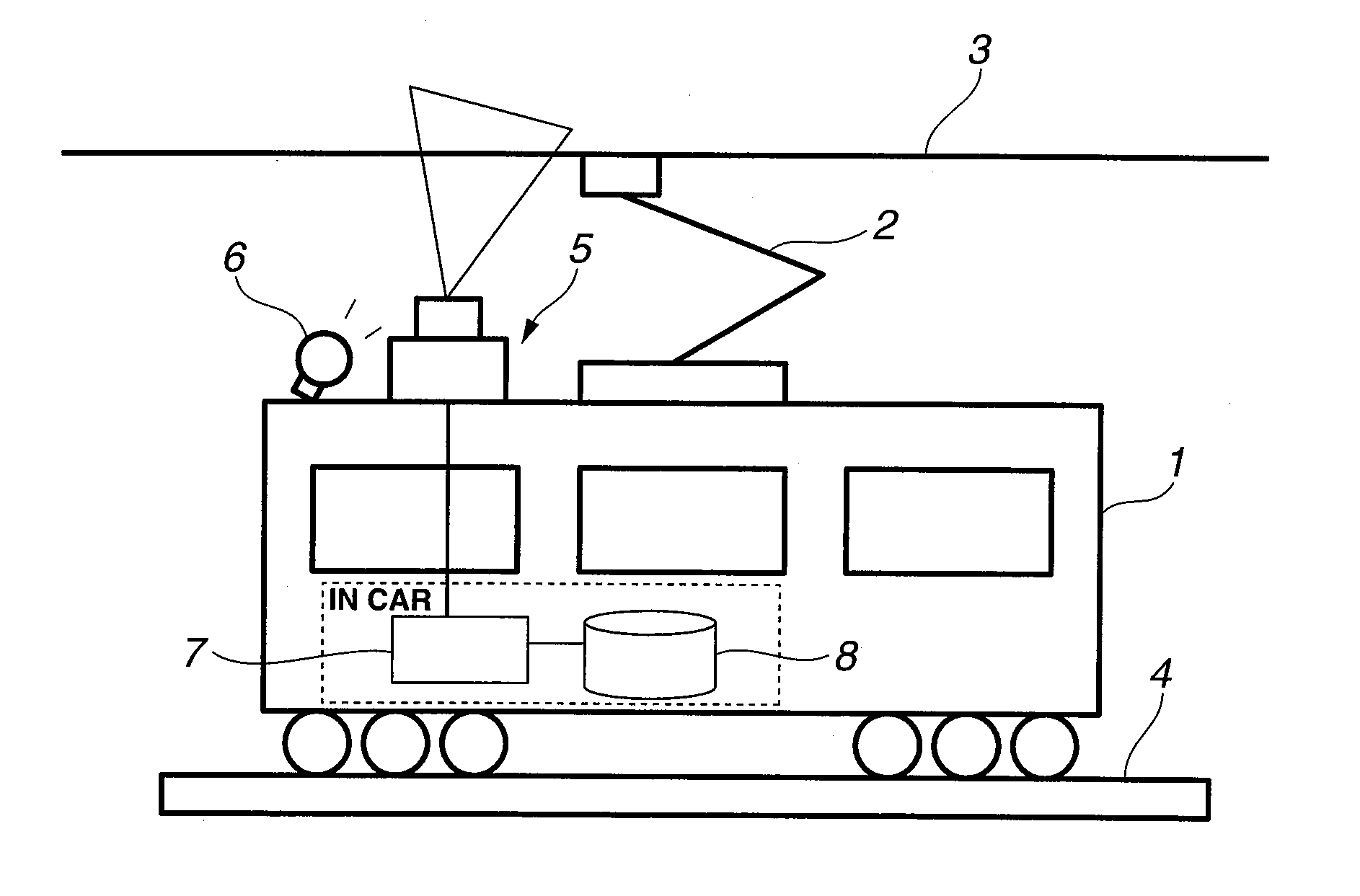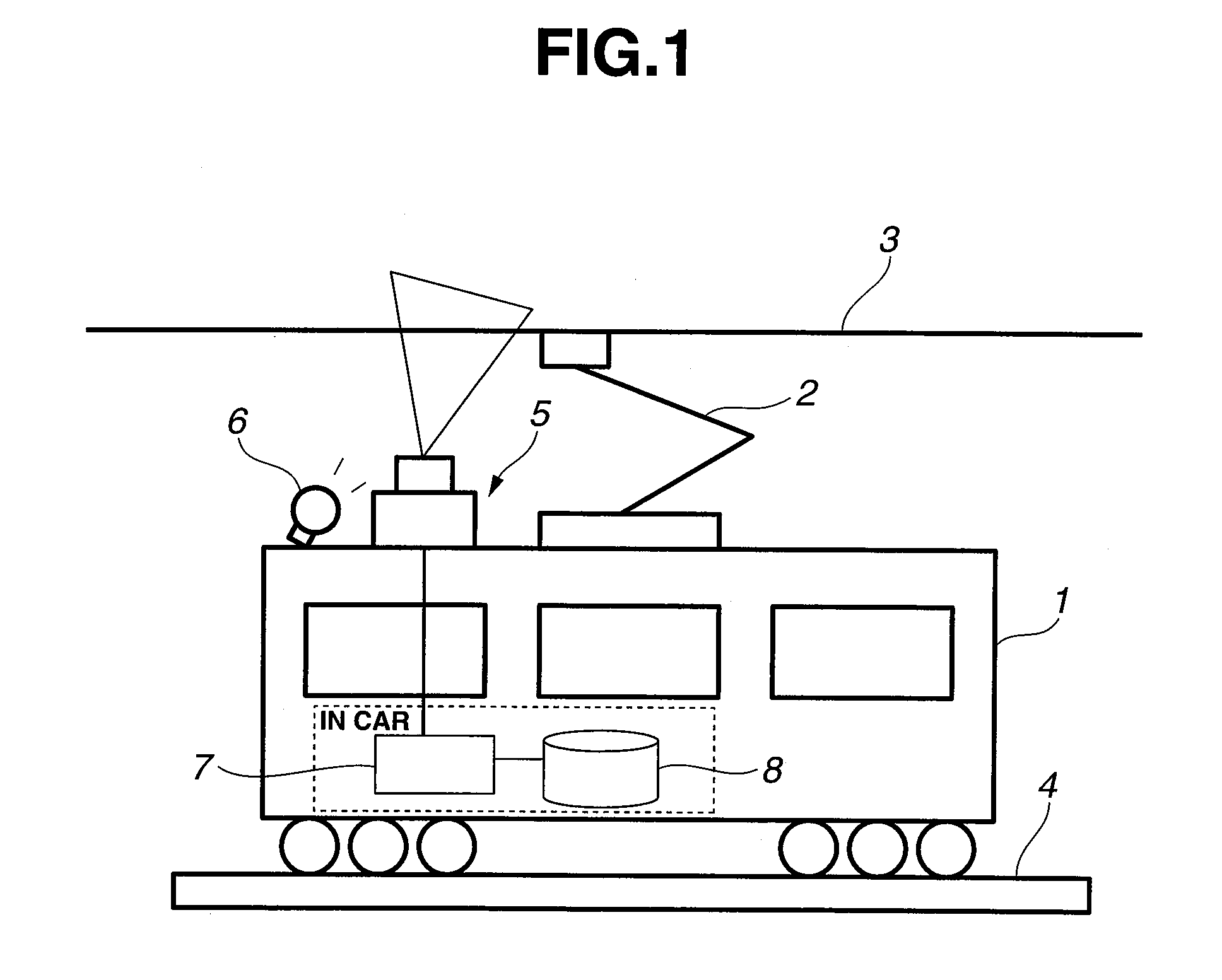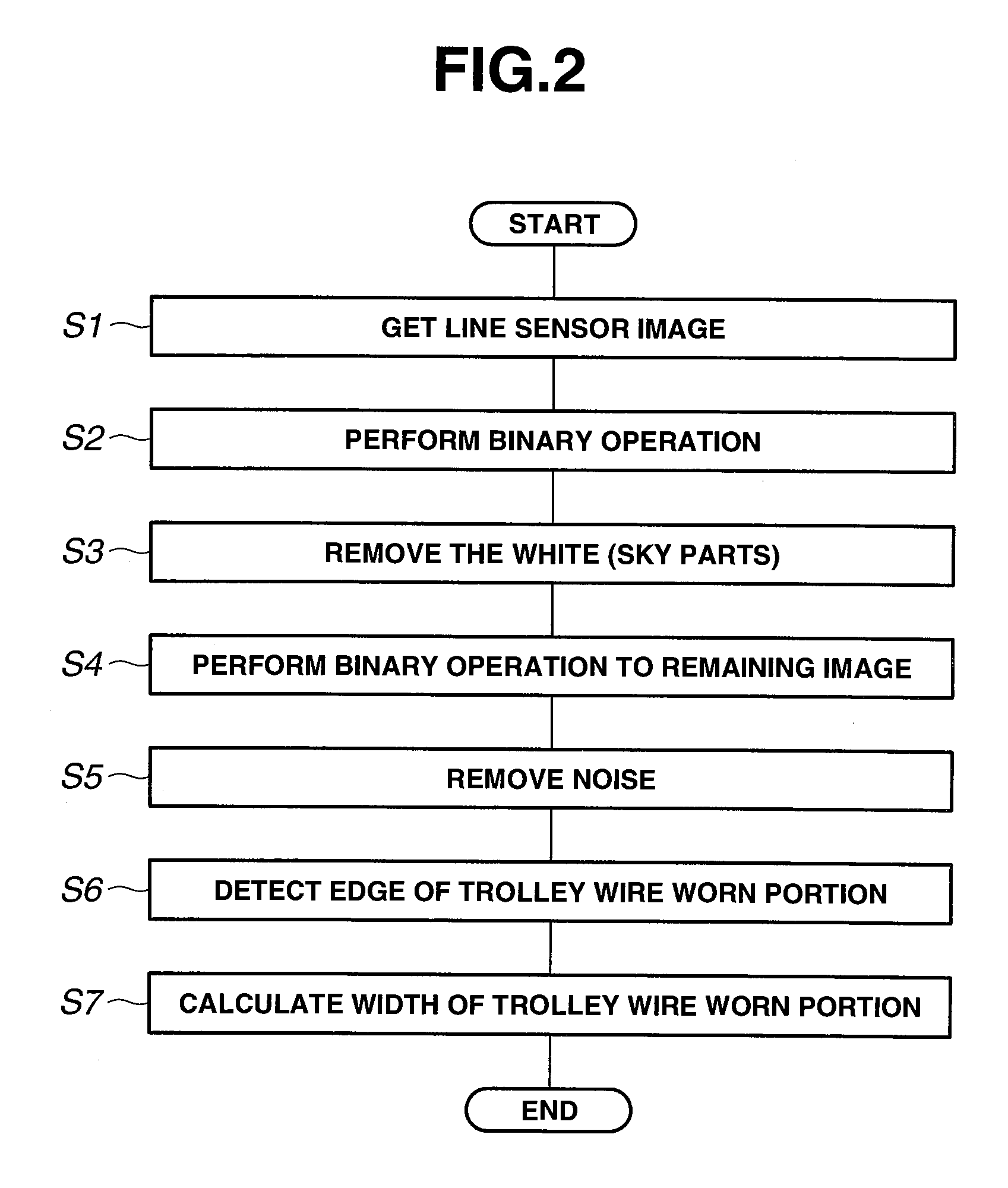Trolley wire wear measuring device
a technology of wear measurement and trolley wire, which is applied in the direction of structural/machine measurement, instruments, and using mechanical means, can solve the problems of difficult to measure the thickness of the long distance section in a short time, and achieve the effect of convenient wear measuremen
- Summary
- Abstract
- Description
- Claims
- Application Information
AI Technical Summary
Benefits of technology
Problems solved by technology
Method used
Image
Examples
embodiment 1
[0044]FIG. 1 is a system diagram of a wear measuring device of a trolley wire, of an embodiment of the present invention, which performs the wear measurement of the trolley wire during daytime.
[0045]A test car 1 collects current from a trolley wire 3 through a pantograph 2 that is mounted on a roof of the car, and is capable of running on a rail along the trolley wire 3 by a motor drive of wheels, same as a passenger car. This test car 1 is provided with a line sensor 5 and an illumination lamp 6, as a photography image input means of the trolley wire 3, on the roof. And a measurement computer 7 and a recording device 8 are installed in the car.
[0046]The line sensor 5 is placed in a direction of a scanning line perpendicular to a laying direction of the trolley wire of a wear measurement target, and shoots a pantograph contact surface of the trolley wire while moving along the trolley wire. For this reason, the line sensor 5 is installed vertically so that the line sensor 5 faces in...
embodiment 2
[0069]Usually, the trolley wire side surface is shot as the black portion due to rust or soot. The trolley wire worn portion is shot as the white, as compared with the side surface, by applying strong illumination (FIG. 5A).
[0070]Through the use of this, in the present embodiment, since the trolley wire worn portion exists in a sandwiched state between the black lines of the trolley wire side surfaces in the removal of the sky parts from “the binary operated line sensor image” in the embodiment 1, the trolley wire side surface is extracted first, then only the white portion existing inside the side surface is extracted (FIG. 5B).
[0071]A flow chart of this process is shown in FIG. 6. The trolley wire side surface is extracted from the line sensor image obtained (S8), and a binary operation process is executed to an area inside this side surface (S9), which are different from FIG. 2. Further, a system of this device is shown in FIG. 7. A trolley wire side surface extraction process se...
embodiment 3
[0073]In the present embodiment, with respect to the removal of the sky parts from “the binary operated line sensor image” in the embodiment 1, as a different manner of the removal of the sky parts, as shown in a system diagram in FIG. 8, two line sensors are provided, and one line sensor 5A shoots a portion of the trolley wire 3 illuminated by the illumination lamp 6 (FIG. 9B), and the other line sensor 5B shoots non-light-applied trolley wire 3 (FIG. 9A). And by getting a difference obtained from them, only a worn area that is illuminated is emphatically extracted (FIG. 9C).
[0074]A flow chart of this process is shown in FIG. 10. An image shot by the line sensor 5A is obtained (S10), and an image shot by the line sensor 5B is obtained (S11), then by performing a differential operation of the both images, the line sensor image in which the illuminated worn area is emphasized, is obtained (S12), which are different from FIG. 2. Further, a system of this device is shown in FIG. 11. Th...
PUM
 Login to View More
Login to View More Abstract
Description
Claims
Application Information
 Login to View More
Login to View More - R&D
- Intellectual Property
- Life Sciences
- Materials
- Tech Scout
- Unparalleled Data Quality
- Higher Quality Content
- 60% Fewer Hallucinations
Browse by: Latest US Patents, China's latest patents, Technical Efficacy Thesaurus, Application Domain, Technology Topic, Popular Technical Reports.
© 2025 PatSnap. All rights reserved.Legal|Privacy policy|Modern Slavery Act Transparency Statement|Sitemap|About US| Contact US: help@patsnap.com



